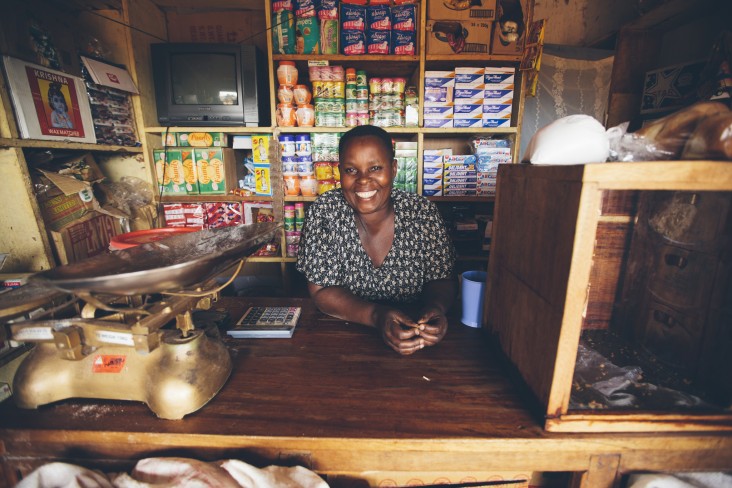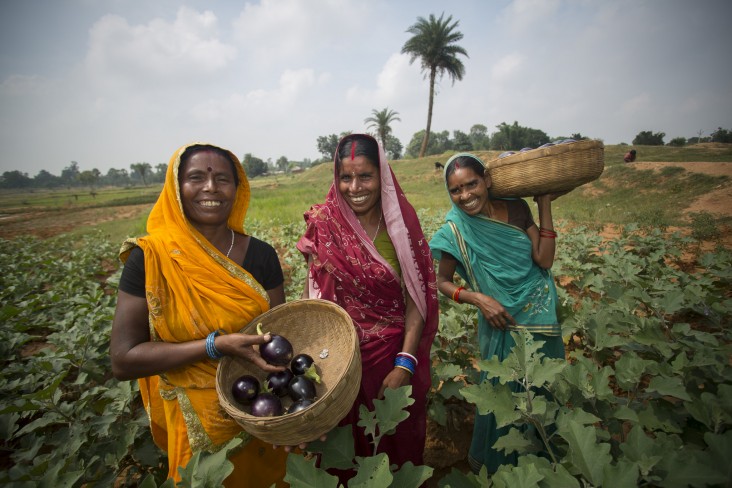- What We Do
- Agriculture and Food Security
- Democracy, Human Rights and Governance
- Economic Growth and Trade
- Education
- Ending Extreme Poverty
- Environment and Global Climate Change
- Gender Equality and Women's Empowerment
- Global Health
- Water and Sanitation
- Working in Crises and Conflict
- U.S. Global Development Lab

Imagine a world of opportunity, only it’s not for you. Not because of anything you’ve done, but because of your sex and the gender roles assigned to it. Women account for one-half of the potential human capital in any economy. More than half a billion women have joined the world’s work force over the past 30 years, and they make up 40% of the agriculture labor force. Yet, women hold fewer assets, earn less, own a fraction of the world’s enterprises, and are often denied more opportunities than men, even when they have the same or higher level of education.
Women are key drivers of economic growth. In order to eradicate extreme poverty and build vibrant economies, women must gain access to and control of capital, land, markets, education, and leadership opportunities. USAID aims to open the world of economic opportunity to women by:
- Removing legal and regulatory barriers that constrain women’s equal participation in the economy
- Providing skills training in higher-value jobs
- Working with employers to hire, train and promote female workers

To help achieve these goals, USAID works with think tanks, implementing partners, local counterparts and the business community to promote greater economic opportunity for women throughout the world. In order to expand the frontiers of this field and understand which business models work best, whave a rigorous focus on results, conducting extensive monitoring and evaluation to bring promising programs to scale. For example, our Women’s Leadership in Small and Medium Enterprises initiative is implementing and measuring a range of interventions in India, the Kyrgyz Republic, and Peru to determine what kinds of assistance has the greatest impact in helping women entrepreneurs grow viable, resilient businesses.
- USAID’s Afghan Workforce Development Program combined job placement with demand-driven training, which resulted in the hiring of hundreds of women. More than 80% of the participants got and retained jobs. The approach is now being scaled dramatically, along with other interventions, to benefit 25,000 women through the Afghan Women’s Leadership in the Economy Program.
- Through the Spring Initiative, USAID is working with the UK’s Department for International Development (DFID) and the Nike Foundation to improve the economic opportunities of poor, adolescent girls. The initiative uses a venture capital approach to work with existing businesses to develop affordable goods and services to improve the capacity of girls to learn, earn, and save safely. Starting in East Africa, the Initiative expects to benefit at least 200,000 girls over the course of the project, and millions more in the future as self-sustaining products reach this vast, under-served market.
- Multi-country collaboration is at the heart of USAID’s work with the Asia-Pacific Economic Cooperation (APEC). In close partnership with the Department of State, USAID provides support to the Policy Partnership on Women in the Economy, including development of a dashboard of indicators and an innovative research agenda addressing women’s economic participation in member economies, such as Papua New Guinea.
Related Links
Infographic: Extreme Poverty and Women [PDF, 688K]







Comment
Make a general inquiry or suggest an improvement.